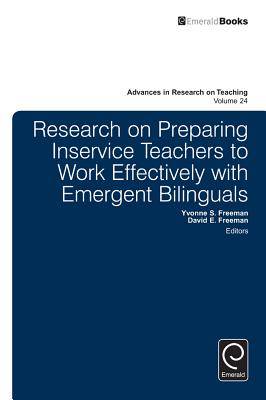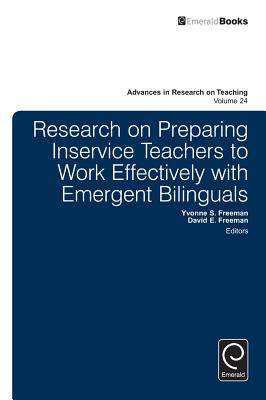
- Afhalen na 1 uur in een winkel met voorraad
- Gratis thuislevering in België vanaf € 30
- Ruim aanbod met 7 miljoen producten
- Afhalen na 1 uur in een winkel met voorraad
- Gratis thuislevering in België vanaf € 30
- Ruim aanbod met 7 miljoen producten
Zoeken
Research on Preparing Inservice Teachers to Work Effectively with Emergent Bilinguals
€ 141,45
+ 282 punten
Omschrijving
Between 1990 and 2010, the English language learner (ELL) population in U.S. schools grew by 80 percent. While the highest concentration of English language learners, now more commonly referred to as emergent bilinguals (EBLs) remains in the traditional immigrant destination states of California, Texas, New York, Florida, Illinois, and New Jersey, in all 50 states there are growing numbers of emergent bilinguals. Interest in these learners has encouraged research and publications, but most of this research has centered on the students themselves and the politics surrounding their education. Publications featuring the research of teacher educators preparing teachers to work with EBLs in schools are much needed. Teacher educators must know how to help inservice teachers provide effective instruction to the increasing number of linguistically diverse students in the schools.
Specificaties
Betrokkenen
- Uitgeverij:
Inhoud
- Aantal bladzijden:
- 328
- Taal:
- Engels
- Reeks:
- Reeksnummer:
- nr. 24
Eigenschappen
- Productcode (EAN):
- 9781784414948
- Verschijningsdatum:
- 4/02/2015
- Uitvoering:
- Hardcover
- Formaat:
- Genaaid
- Afmetingen:
- 155 mm x 229 mm
- Gewicht:
- 612 g

Alleen bij Standaard Boekhandel
+ 282 punten op je klantenkaart van Standaard Boekhandel
Beoordelingen
We publiceren alleen reviews die voldoen aan de voorwaarden voor reviews. Bekijk onze voorwaarden voor reviews.










